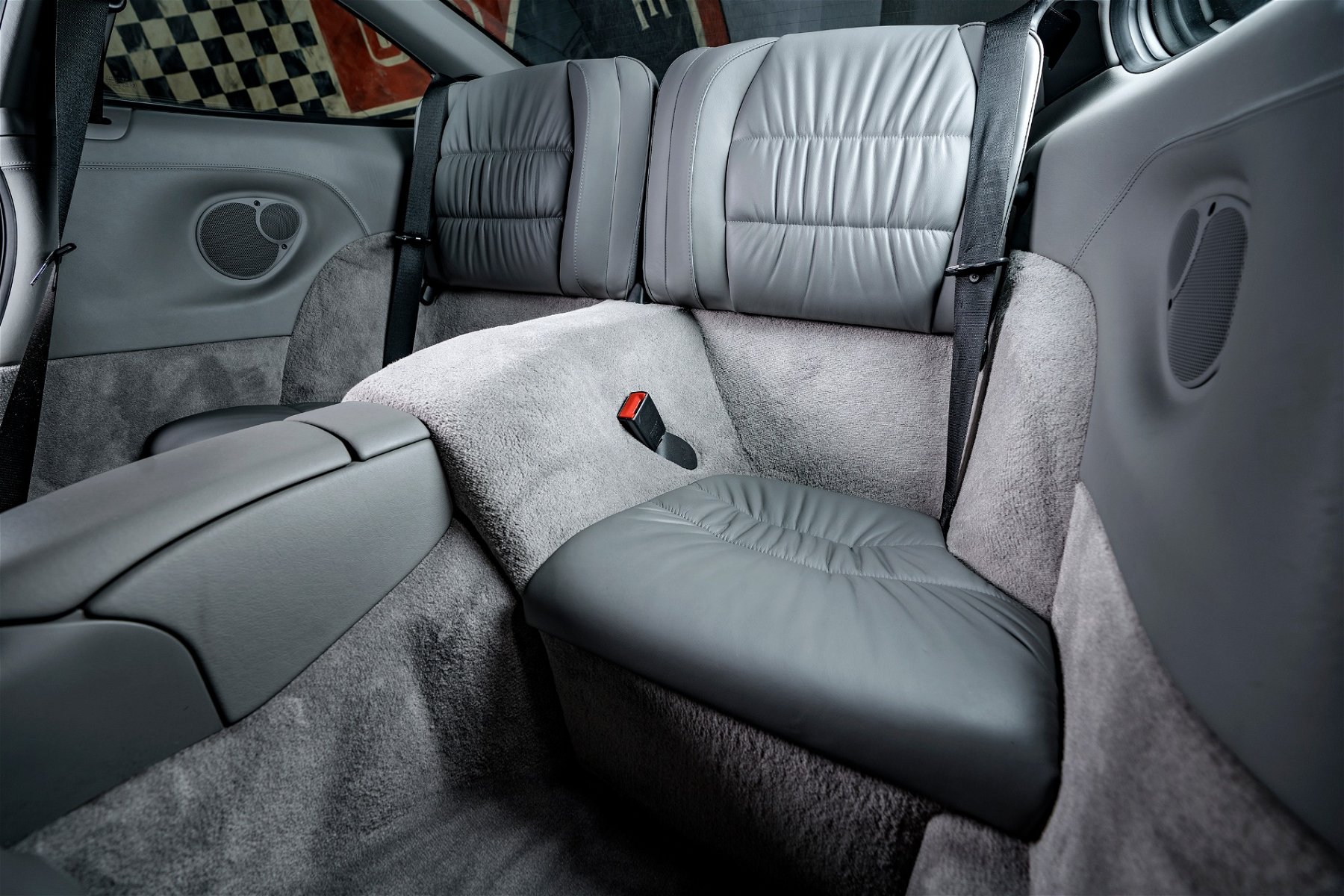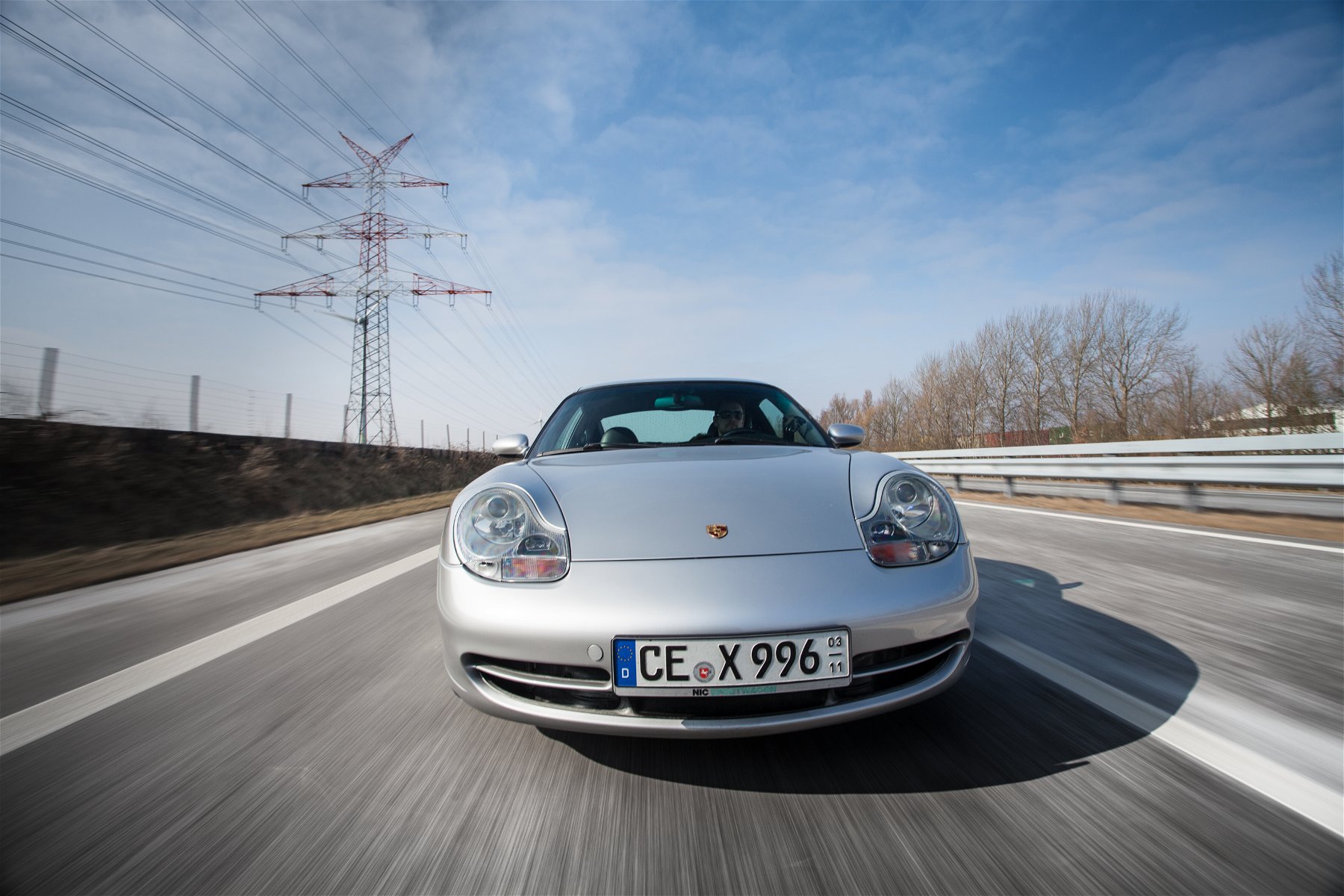
More than 20 years ago, the still controversial Porsche 996 Carrera 3.4 was born. The fifth Porsche 911 had to become more profitable. Therefore, the front end, including the suspension, is nearly identical to its little brother’s, which is the Porsche Boxster 986. To meet emission regulations, the engine had to be watercooled and the production needed more automation. Watercooling, Boxster front end, mass production… Could that still be a real 911?
Prices bottomed out a few years ago, which results in many rough examples, which haven’t been looked after properly. Let’s have a look at some of the most important facts to consider, when looking out for a Porsche 996 Carrera 3.4 in our buyer’s guide.
The Porsche 996 Carrera was the first 911 which differs significantly from the classic 911’s design. From the side it may still be unmistakeably a 911, but the front with the fried egg headlamps is completely unique in the history of the Porsche 911. On the other hand, it makes the 996 stand out from the pack a little bit. Compared to the 993, the Porsche 996 Carrera grew 14 cm in length and 4 cm in width. But it is 5 mm lower and about 50 kilograms lighter than its predecessor.


In the interior, loyal Porsche fans had to cope with the elimination of the classic five instruments on the dashboard. The instruments melted together in the Porsche 996 Carrera and were all squeezed directly behind the steering wheel, which made them easier to read. Similarities between the 996 and the Boxster can be found all over the interior, which leads to regular arguments among Porsche enthusiasts. The aim of making the Porsche 911 more user friendly was achieved though. In the 996, everything has its place and is arranged very logically and self-explanatory.
But still, the cost pressure can be seen in the interior. Nearly everything in the Porsche 996 Carrera’s interior was an option. Doorcards and dashboard were made of cheap plastic. Having them wrapped in leather came at a hefty pricetag back in the days. Automatic air conditioning was an extra, as well as the PSM traction control or the rear wiper. A glove box wasn’t even available as an option before the facelift.
Especially in the early 996 Carreras, the leather tended to wear quite badly over the years. Cars, that weren’t stored in a garage can’t hide that. Even cars with very low mileage often look very abused, especially when they’re equipped with a bright interior. Seats in good nick are at least an indication for good care. The center tunnel’s soft coat is often heavily scratched, in case it hadn’t been painted as an expensive option. Same applies for the handbrake and gear lever. The oval buttons in the center console may not be the last word in terms of haptic feedback, but they seem to be very durable.



Pixel errors in the trip computer are not uncommon and costly to repair. The locking mechanism for the rear pocket in the center tunnel breaks occasionally and replacement comes at a hefty pricetag. For the speaker covers it’s even worse. They often get smashed and Porsche hasn’t got them in stock in every color. The first Porsche Communication Management can quit its service as well, which led many owners to an aftermarket replacement. Even though critics may have thoght differently, the Porsche 996 Carrera 3.4’s interior has aged quite well and the simplicity is typical for Porsche.
Next part of the Porsche 996 Carrera 3.4 buyer’s guide: The suspension. For a rear engined sports car, the Porsche 996 Carrera 3.4 has reassuringly friendly driving characteristics. The combination of parts from the Boxster for the front and the 993 for the rear suspension freed the 911 from its capricious driving behaviour. Some purists call it boring, but that friendly nature made the fifth Porsche 911 suitable for the mass market und therefore led to outstanding sales figures.
The suspenion mounts are often worn after its more than 20 years of life. Depending on the mileage, replacing the brakes could be necessary. The suspension and brakes may not be prone to excessive wear, but replacement isn’t cheap. We would recommend a four-figure sum for new dampers, bushings and brakes up the sleeves.


When revising the suspension, you should consider upgrading to Porsche’s sports suspension, or high quality aftermarket coilovers. Modern damping technology transforms the Porsche 996 Carrera to a seemingly new car. Take a closer look to the tires as well! Rubber without the N-identification code is a clear hint, that the car has been run on a tight budget. Especially from the second or third owners onwards, that happened more often as you might think, because the resale prices had been that low in recent years.
No buyer’s guide for the Porsche 996 Carrera 3.4 would be complete without mentioning some of the problems of the M96 engines. Firstly, they often leak at the rear main seal. Blue smoke at the startup is a hint at worn piston rings or even bore scoring. Countless scientific papers were dedicated to the problematic cylinder coating. That problem can affect every M96/97 engine and the risk seems to correlate with the engine’s capacity.
More problems can be found in the valvetrain. The intermediate shaft, which drives the camshafts via a chain has a seal, which can wear. This would result in a failing intermediate shaft bearing (known as IMS failure) and leads to catastrophic engine failures. You won’t find any official figures about how many M96 motors have been affected, but depending on the source your quoting, the truth seems to be somewhere between five and ten per cent. However, there are some solutions to prevent such damage from occuring. They reach from inspecting your oil to replacing the bearings themselves, which could be done for roughly 2.000 Euros.

The clutch has a reputation for being undersized in the Porsche 996 Carrera 3.4. If the clutch pedal feels suspiciously heavy, that’s a sign for a worn clutch. Another known problem is the weak synchro mesh of the manual gearbox, especially in second and third gear. The Tiptronic on the other hand seems to be inconspicuous. In contrast to the 993, the 996’s dry sump lubrication doesn’t have an external oil catch tank and the seperate oil cooler has been dropped in favour of an oil-water heat exchanger, which can fail as well.
Both outer air intakes on the front bumper of the Porsche 996 Carrera are housing radiators for the cooling system and the air conditioning. Especially when driven daily, leaves and moisture can cause oxidation on the radiators which results in leaks. Cleaning the the air intakes at least twice a year is therefore highly recommended.


Therefore, problems with the air conditioning often have something to do with damaged radiators. Changing them often brings leaks in the cooling system to light. Replacement is very costly and sums up to the four-figures pretty easily on parts alone. That means, you should lift the car in question up and check the intakes with a flashlight before making an offer!
The forementioned points do show that it’s not easy to find a good example of the Porsche 996 Carrera 3.4 and you have to be careful. The cheaper car will become the more expensive in almost every single case. Especially cosmetic repairs can get extremely cost-intensive. Mechanically, the 996 Carrera has its quirks as well, which makes some savings for repairs absolutely necessary.
But whoever dares, is also rewarded with a fantastic sports car, that doesn’t feel at all like it’s more than 20 years old. The Porsche 996 Carrera 3.4 drives like a modern car, does 0-62 mph in around five seconds and tops out at 174 mph. It offers typical 911 utility and is priced very attractive, especially compared to its brothers. As an entry to the Porsche 911 world, the 996 seems to be perfect, especially for younger buyers. So, is the 996 Carrera 3.4 still a real 911? You bet!
© Images: Porsche AG, CCS Motors & Henner Huflage
Elferspot magazine